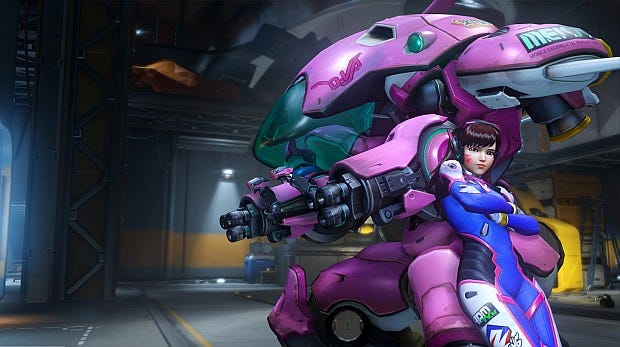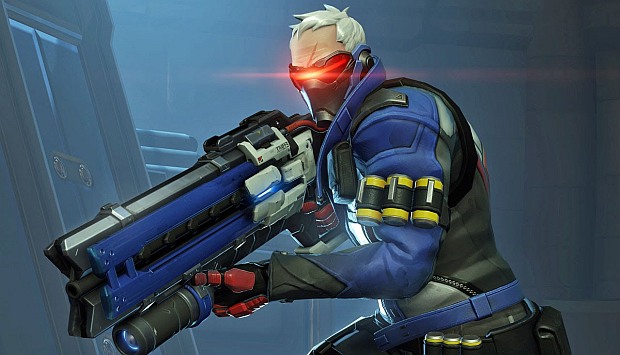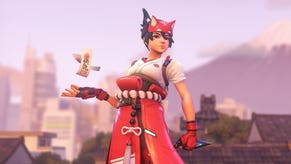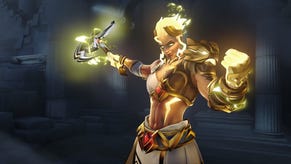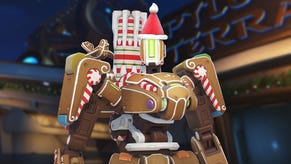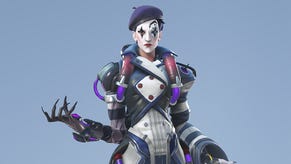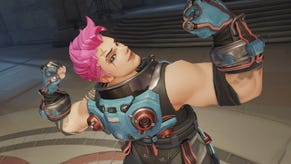Overwatch’s PTR Hero Balance Changes Explained
Get ready for season three.
Blizzard is currently making significant hero changes over on the PTR version of Overwatch. The changes are being made to reflect the upcoming season of competitive play and helps give us a rough idea of how certain heroes will perform. To help prepare you, I've put together a list of the most impactful buffs below. None of these changes should be considered final, as Blizzard will continue to tweak certain elements as the PTR progresses, but they should help you get a head start on adjusting to the updates to come.
Widowmaker
Overwatch’s archetypal sniper has fallen on hard times. The cold-blooded assassin reigned supreme over her foes back in season one and there seemed to be no limit to her power. However, the mid-June nerfs crippled Widowmaker’s performance and transformed her from lethal killing machine to a husk of her former self. Blizzard has been keen to address the issues surrounding Widowmaker and made vital changes to her scoping-in animation. They reduced the animation time from 0.5 seconds to 0.33 to help her acquire new targets and speed up her reaction times.
The current PTR changes also look to sharpen Widowmaker’s fangs once again and allow her to have more impactful experiences in-game. Widowmaker’s Venom Mine will no longer damage her when it explodes, instead it will give the assassin greater survivability if she is flanked or rushed by an enemy Winston or Tracer. However, the biggest buff is to Widow’s Kiss. The charge rate has now been increased by 20% and will allow Widowmaker to perform more killing blows in a shorter period of time. It’s hoped that the charge rate increase and the reduction of her scoping-in animation will put Widowmaker back in the spotlight once again.
Pharah
Pharah’s minimum explosion damage has been increased to 25% total damage. Most explosives in Overwatch have a blast radius and the damage from the explosion greatly decrease from the point of contact. Pharah’s rockets deal a maximum 120 damage and the blast radius currently drops off to 12%. This means her rockets are dealing a measly 14 damage and forces her to land direct hits to inflict any meaningful damage. The Rocket Launcher buff is greatly welcomed and gives Pharah a decent boost to her minimum splash damage. However, the minimum explosion knockback has been decreased to 0% of rocket’s total knockback (formerly 75%). This nerf diminishes Pharah’s ability to juggle targets and throw off their aim. It seems as though Pharah will be significantly weaker in direct engagements, especially against hitscan heroes like Soldier 76. Not being able to launch foes around will greatly decrease her survivability in most encounters, unless she lands that all-important direct hit.
D.Va
D.Va has been buffed in the past by Blizzard, but the mech pilot has proved unpopular in both high and competitive levels of play. In order to solve this issue her mech health has increased to 200 from 100 and her movement speed while firing has been increased by 25%. The added tankiness and movement speed buff will give D.Va more opportunities to sponge incoming attacks and deal more damage when up close. D.Va has struggled to find her place within the competitive scene as her low movement speed meant that players could simply outrange and dodge her attacks. It’s hoped that the buffs to her health and movement speed will finally make her a competitive pick across all divisions.
Mercy
Mercy’s passive health regeneration will now kick in when she avoids taking damage for one second as opposed to three seconds. Originally, Mercy would have to stay completely out of the fight to ensure she is able to utilise Resurrect. Mercy’s biggest problem is her survivability, as many players focus her down in order to stop her healing and reviving her allies. However, the buff to her passive aims to put the healer firmly into the fight as opposed to waiting at the back of the map. The buff not only increases Mercy’s overall sustain, it also enhances her role. Hiding on the fringes of the map doesn’t make for engaging gameplay and this buff helps rid Mercy of the stagnant strategy that has plagued her.
Soldier 76
The battle-hardened soldier is receiving a buff to his Pulse Rifle. The bullet damage has been increased from 17 to 20 and its maximum spread has increased from 2.2 to 2.4. This gives Soldier 76 higher DPS potential that requires better burst control. The higher rate of fire and accuracy will prove even more deadly to discorded victims, while his base damage increase will allow him to shred through several 200 HP heroes. Soldier 76 has always been a good hero, but with the added fire control he is able to handle situations more effectively. He’s great at stopping flanking heroes and can be extremely useful as a secondary DPS, especially at higher levels of play. The buff won’t allow him to out damage meta picks like McCree and Reaper, but it will give him more opportunities to finish off targets at range.
Ana
There’s been a lot of discussion surrounding Ana as many players feel she has been too impactful, especially to her allies. To combat this, Blizzard has nerfed her Nano Boost by getting rid of the movement speed bonus. Nano Boost was extremely potent when combined with various ultimate abilities which made it very difficult for Ana’s foes to get away. The nerf is likely to have a significant impact on her play rate, but it certainly won’t be the downfall of the support.
Zarya
The power Zarya gains from her Particle Barrier and Projected Barrier have been decreased by 20%. This means it will now take longer for Zarya to get to maximum charge. She’s still effective in terms of her utility and sustain, but she will now take longer to unleash her full damage. The shields don’t decrease any faster, however you will need to be more strategic with your placements if you want to get that 100% charge. It’s not a huge nerf and it won’t remove Zarya from the meta, but it will delay her power enough to give her foes a fighting chance.
Torbjörn
The final changes are to the weapons designer, Torbjörn. Overwatch’s resident engineer now automatically generates one scrap every 0.5 seconds. Before the game starts you can start giving your teammates a significant amount of armour, but the amount of scrap collected from fallen enemies has been decreased by 40%. His hammer swing has also been increased by 25%, while the damage has been decreased by 27%. These changes will give Torbjörn the consistency he currently lacks. If his enemies are not dying he will still be able to gain scrap and supply armour to his allies, while the speed increase to his Forge Hammer will allow him to level up and repair his turrets quicker.
Ultimate changes
Every single ultimate cost has been increased by 25%. But what does this mean for Overwatch’s overall gameplay? Well this change will slow down the game tremendously. One of the biggest complaints about Overwatch was that the current game is just too hectic and can be hard to keep track of everything. Sometimes team fights can feel like a blur of abilities and Blizzard are trying to tone this down considerably. The 25% increase will slow down engagements and put more emphasis on actual skirmishing instead of spamming ultimate abilities. However, it’s likely that this change of pace will just lead to a longer poke phase, with both teams waiting for their ultimates to charge. In either case, it'll have a huge impact on the game.
For more tips on playing, check out our full Overwatch character guide.
